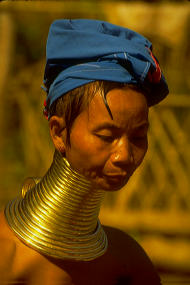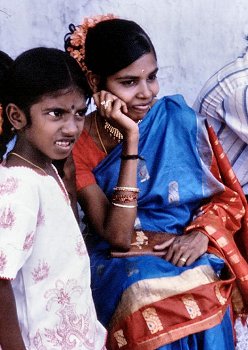Chinese Culture >> Asian Articles >> Asia People
Asian People
A continent as vast as Asia is bound to have great variations between its regions. There are differences in climate, landforms, and animal and plant life. But perhaps the greatest difference of all is between the many groups of people who live in Asia. Almost every racial type in the world can be found there.
There is every variety of skin color, from white
through yellow and brown to black, and every shade between. There is an equally great variety of physical types and facial
appearances. These different types of body builds and features are found in
every "race" or skin-color group. For thousands of years various groups have
been mixing, creating ever new combinations of characteristics.
between. There is an equally great variety of physical types and facial
appearances. These different types of body builds and features are found in
every "race" or skin-color group. For thousands of years various groups have
been mixing, creating ever new combinations of characteristics.
Much more significant than the physical differences between Asia's peoples are the cultural differences-- the way they live, their habits and customs, the religions they believe in, their values, the languages they speak, the way they think. These differences, like physical differences, also cut across racial lines.
In southwest Asia, for example, most of the people are Caucasian, or "white." Yet there are great differences in the way they look and the way they live. Arabs, Turks, Persians, Kurds, and Israelis all speak different languages, dress differently, and have different ideas of what is good and what is bad. They follow different religions. The Turks, the Persians, and most of the Arabs are Moslems. Some of the Arabs are Christians. And most Israelis are Jewish. Each religion has many sects. Even within such a group as the Arabs, who speak the same language, there are great differences between the desert nomads with their flocks, the settled farmers of the more fertile regions, and the townsmen.
In south Asia there are even more differences between groups of Asia people. In India alone, fourteen major languages are spoken. In religion, most Indians are Hindus, but there are also Moslems, Sikhs, Jains, Christians, Buddhists, and Zoroastrians (fire worshippers).
 The
same sorts of differences can be found in the other parts of Asia. What makes
the people so different from each other? Part of the answer is tradition-- the
customs and beliefs handed down from generation to generation. Another reason is
the values taught by their religions.
The
same sorts of differences can be found in the other parts of Asia. What makes
the people so different from each other? Part of the answer is tradition-- the
customs and beliefs handed down from generation to generation. Another reason is
the values taught by their religions.
Still another reason for the differences is the influence of the surroundings--climate, landforms, nature of the soil, and natural resources. It is clear that people who live in a cold, dry region of grasslands and deserts, like the Mongols, will live very differently from the people of a wet tropical island such as Java.
Because Asia is large and communications (until recently) have been very poor, the people of each district developed their own dialect or local variety of a language. Often the dialects of the same language may be so different that two people speaking different dialects cannot understand each other. Thus, a Chinese from Canton may not be able to understand another Chinese from a village only 50 miles away.
The fact that so may Asian people speak different dialects or languages has caused a great deal of difficulty for the governments of Asian countries. To overcome this problem, some countries have established one dialect or language as the official one. In India, for example, the official language is Hindi (along with English). In China the Mandarin dialect is taught to all school children. In the Philippines, where the people speak various Malaysian dialects, the official dialect is Tagalog.
Mankind has lived in Asian a very long time. Some of the oldest known fossils of prehistoric man have been found on the island of Java in Indonesia and near Peking in northern China. The world's oldest civilizations are Asian. Chinese civilization is nearly 5,000 years old, and the civilization of India is nearly that old.
Next Page: Transportation in Asia
Table of Contents
Asia Introduction Asia Climate Asia People Transportation in Asia
